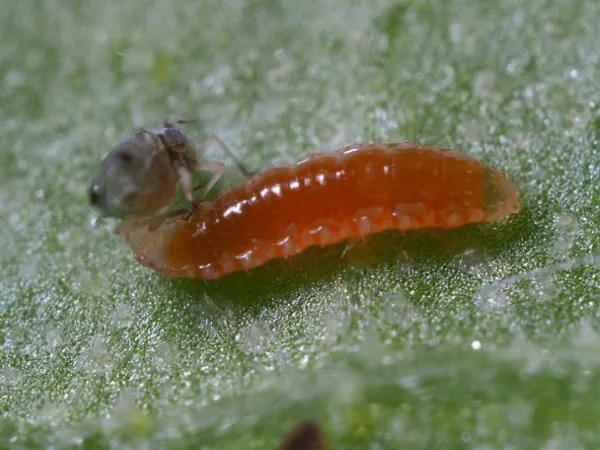The fight against aphids is in full swing again. If growers had to choose one control agent they would not want to be without, most would select Aphidoletes-System. While displaying excellent searching behavior, this gall midge plays a key role minimizes hotspots from developing.
About 3mm in size and orange in color, Aphidoletes larvae can each eat up to 100 aphids a day. At home in a range of crops, this midge isn’t fussy – devouring most aphid species. Over the years, these key attributes have made Aphidoletes aphidimyza a valuable player in Biobest's biological control programs for this widespread and challenging pest.

Great at searching
Aphidoletes-System is as efficient as it is effective. The adult females are active around dusk and at night. After mating, they go searching for aphid hotspots. Sap sucking pests, aphids excrete a sticky honeydew. Strongly attracted by its smell, female Aphidoletes quickly and accurately home in on aphid hotspots and deposit their eggs.
From these small red ‘bean shaped’ eggs, gall midge larva emerges within about three days. These hungry predators immediately go in search of prey.
Large appetite
The voracious Aphidoletes larvae sting aphids, injecting a paralyzing poison immobilizes them. Having consumed sufficient aphids, the larvae drop from the leaf to pupate in the upper layer of the soil. In rare cases, they have been shown to pupate on the leaf. Sensitive to drying out, the pupae generally need soil and slightly moist conditions.
Power in numbers
Apart from the females’ excellent searching behavior and the larvae’s various appetites, the Aphidoletes-System offer other advantages; these midges do not cause leaf damage by forming galls and are not sensitive to hyperparasitisation.
Biobest’s Aphidoletes-System is available in units containing 1,000, 2,000 and 10,000 pupae. After opening, pots containing 1,000 pupae should be placed upright between the plants (in the shade and out of direct sunlight) and in and around pest hotspots. The 2,000 and 10,000 units need to be distributed in fixed introduction points. In practice, buckets are often used, with or without moist play sand in the base.
Advice
For good distribution to optimize effectiveness, it is important to have sufficient introduction points throughout the crop. After release, growers are advised not to burn sulphur – as this disrupts the gall midge's searching behavior.
 Biobest
Biobest